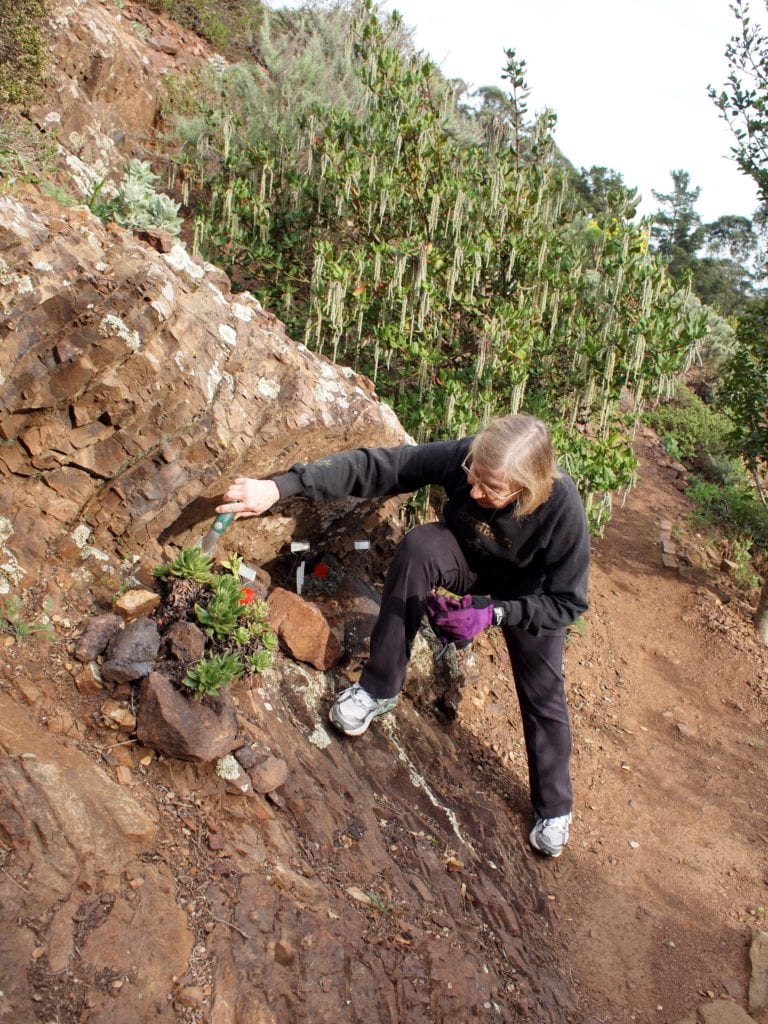
Story and photos by Murray Schneider
Jeanne Halpern, who lives on a hill overlooking O’Shaughnessy Boulevard, acquired a green thumb in 2000 and a dozen years later her Valletta Court backyard, once rife with invasive weeds, now has a totally different look.
Halpern’s backyard is perched on a slope that would challenge a sure-footed Billy goat. A retired college English teacher, she’s cultivated a garden that now boasts scores of low-maintenance California native plants, creating habitat for honeybees, butterflies and songbirds, each plant a trophy from a botanist’s field kit.
“I begin each day with a cup of tea looking at my garden,” she said on a recent sunny February morning, as she prepared to lead a neighbor on a 45-minute tour.
Halpern vacationed in Europe 12 years ago. When she got home and looked at her backyard, which had been usurped by colonizing French broom, she had an epiphany.
“There was a ton of ice plant, as well,” she said, as she maneuvered through narrow paths, their edges bordered with wild strawberry, bee plant and California lilac. Her garden was started by Alrie Middlebrook, co-author of “Designing California Native Gardens,” and built by David Schooley, a founder of San Bruno Mountain Watch.
“David Schooley is a visionary,” she said, “And he’s been a friend over the years.”
Indeed, Schooley’s creation is a revelation. Except for the thrum of O’Shaughnessy traffic, Halpern can daily sequester herself in an Elysian solitude, surrounded by coyote bush, coffee berry, Islais cherry and golden and pink flowering currant.
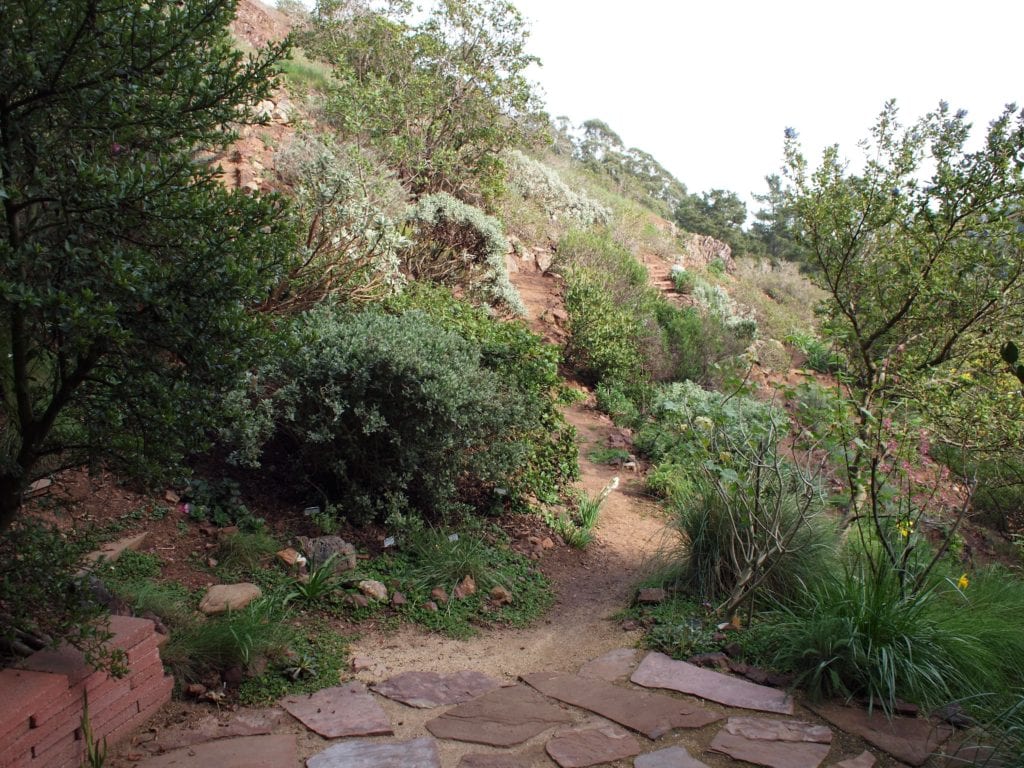
Flowering plants aside, when pinned against one of her Schooley-crafted rock walls, she isn’t shy about selecting her favorite place in her garden.
“The rocks are the most beautiful things,” she said, pointing to a chert formation that could just as easily erupt from a Glen Canyon rocky promontory across O’Shaughnessy where, at the moment, a bus groaned up the hill, soldiering past Malta Drive.
The chert – rising above paths Halpern dedicates with names such as Lower Meadow, Central Stairway, and Erin’s Corner – is chiseled with horizontal reddish-brown incisions, sculpted almost sharp enough to cut someone’s fingers.
Here a roaming coyote once found respite, not far from its canyon den.
Halpern angled along a switchback that took a precipitous dogleg to a trail below, stepping as if she weren’t a septuagenarian, but a high-wire tightrope acrobat.
“You want to avoid down there,” she cautioned, “There’s poison oak.”
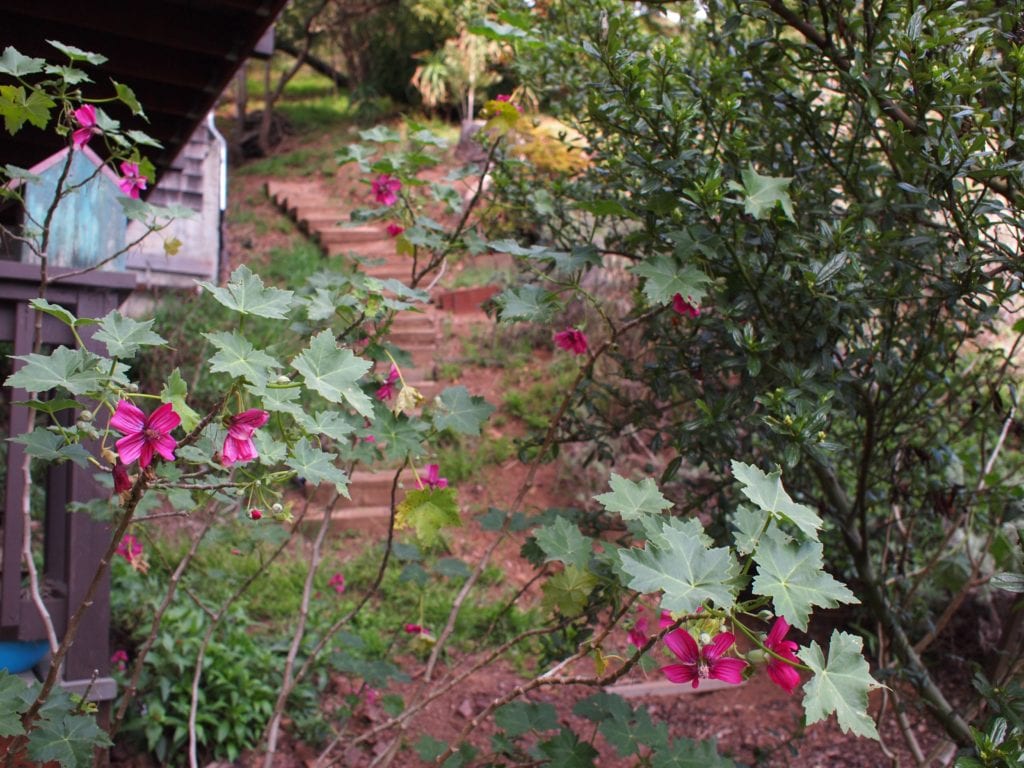
She continued serpentining past California sage and a manzanita that stood above a rectangular cedar marker. “This is Hilary’s Hillside,” she said, pointing to a handcrafted plaque in memory to a friend who died in 2006.
“Hilary and I go back to 1952,” she volunteered. “We hiked all over Venezuela, where she lived much of her life.”
Halpern stopped at the Big Rock Trail, aptly named because the chert towered above her. California poppies bloomed and dotted the slope. She stopped, pointing past a slope of white sage, red buckwheat and California morning glory competing for attention with the yellow poppy petals.
“There’s some blue dick, too” she said. “I collected its seeds and planted them next to the soap plant, which the Ohlone used for soap and brushes.”
Halpern guides her gardeners Hugo and Marina a day or two a week, watering newly introduced plants while her partner Louis enjoys an occasional turn or two around the garden.
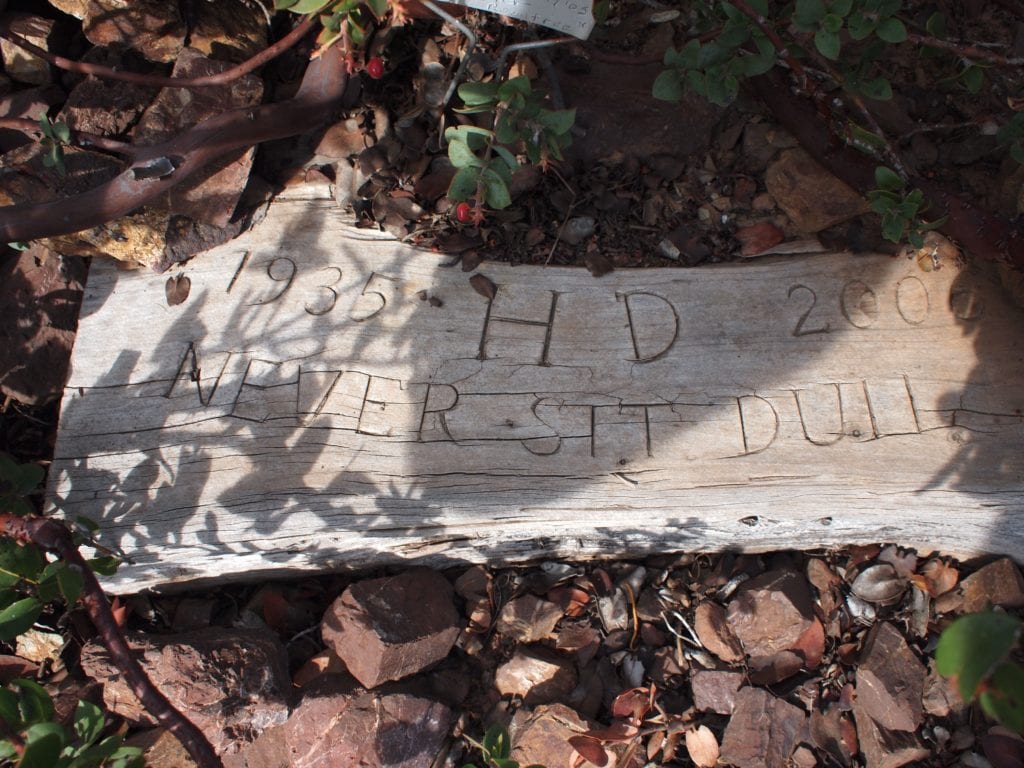
“I go to Strybing and other garden centers for the right natives,” she said. She is always on the look out for plants.
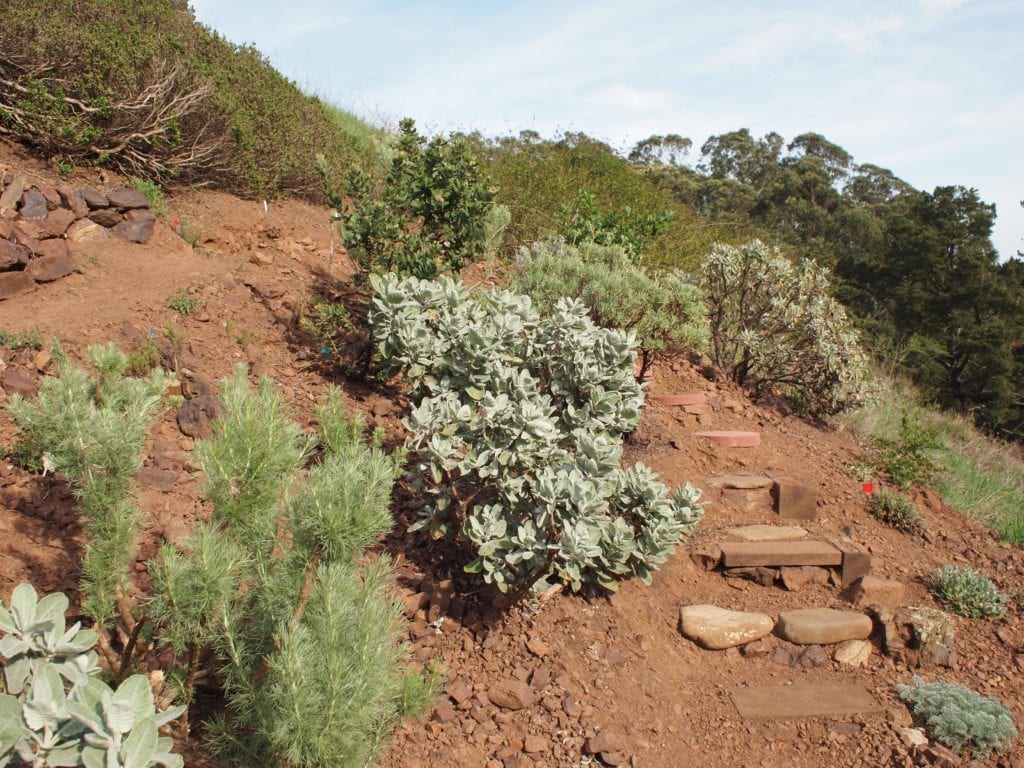
At the moment, though, she’s preparing for the annual spring Native Plant Garden Tour. The Yerba Buena Chapter of the California Native Plant Society sponsors the self-guided tours. Halpern’s garden will be open to the public from 11-3 P.M. on April 15th.
Is she burning the midnight oil, cramming for her imminent gig by devouring the latest edition of Carol Bornstein’s California Native Plants for the Garden? “Not at all,” said the former Purdue University English professor. “I’m re-reading “The Great Gatsby.”
For a map, garden list and more information, visit sfnativegardentour.org or telephone 510-759-3179. The April 15, 2012 tours are free and self- paced and no registration is required.